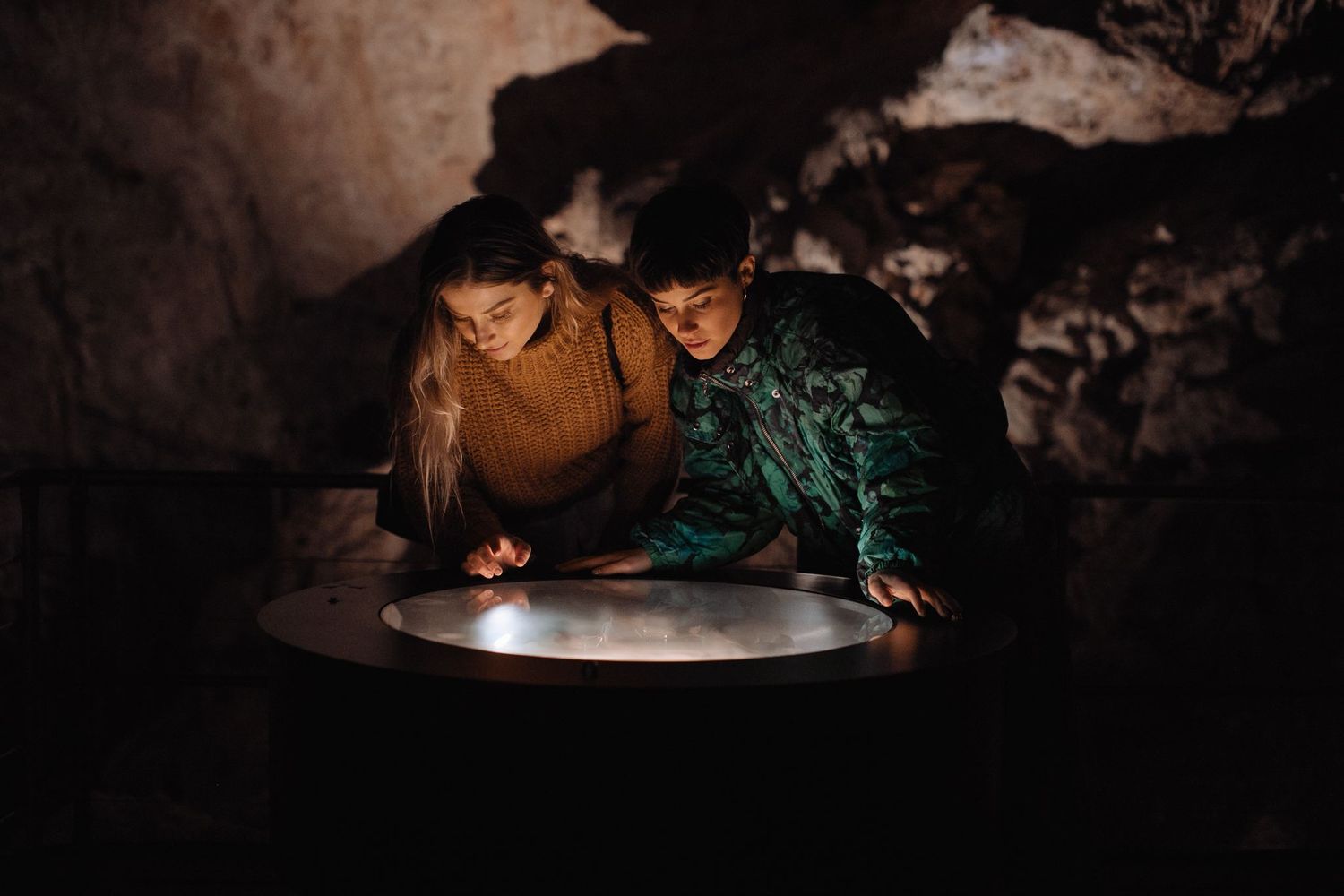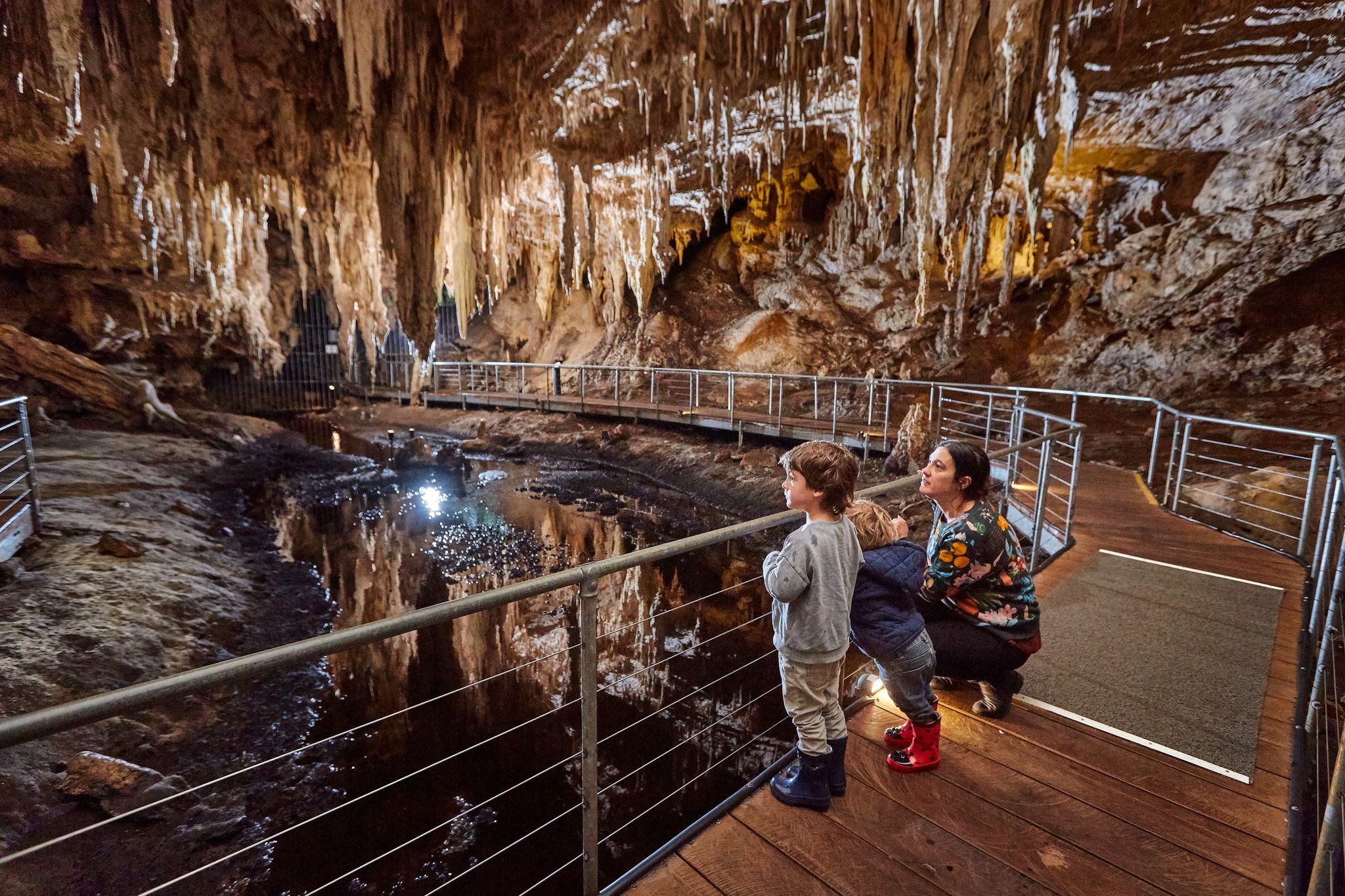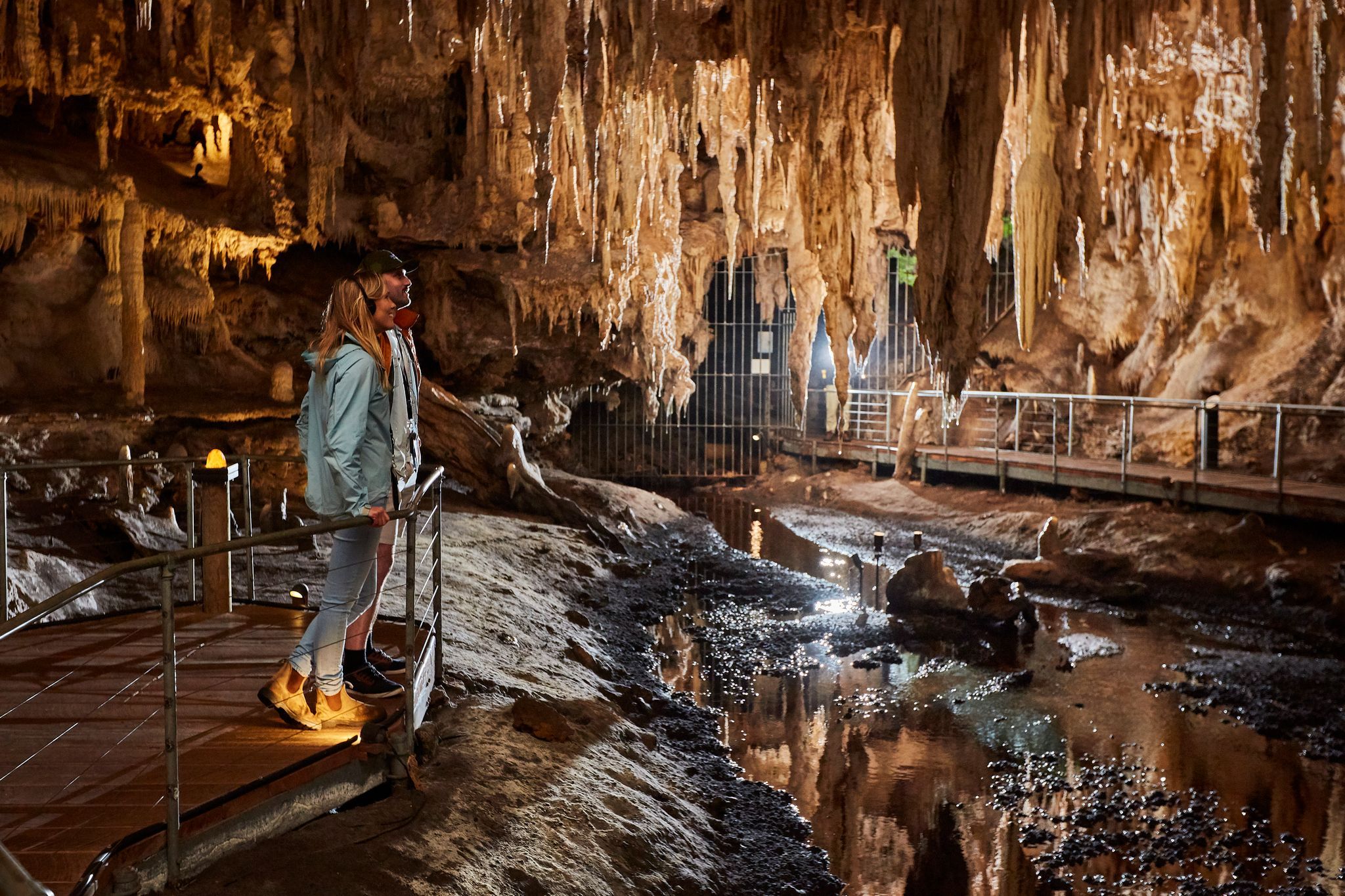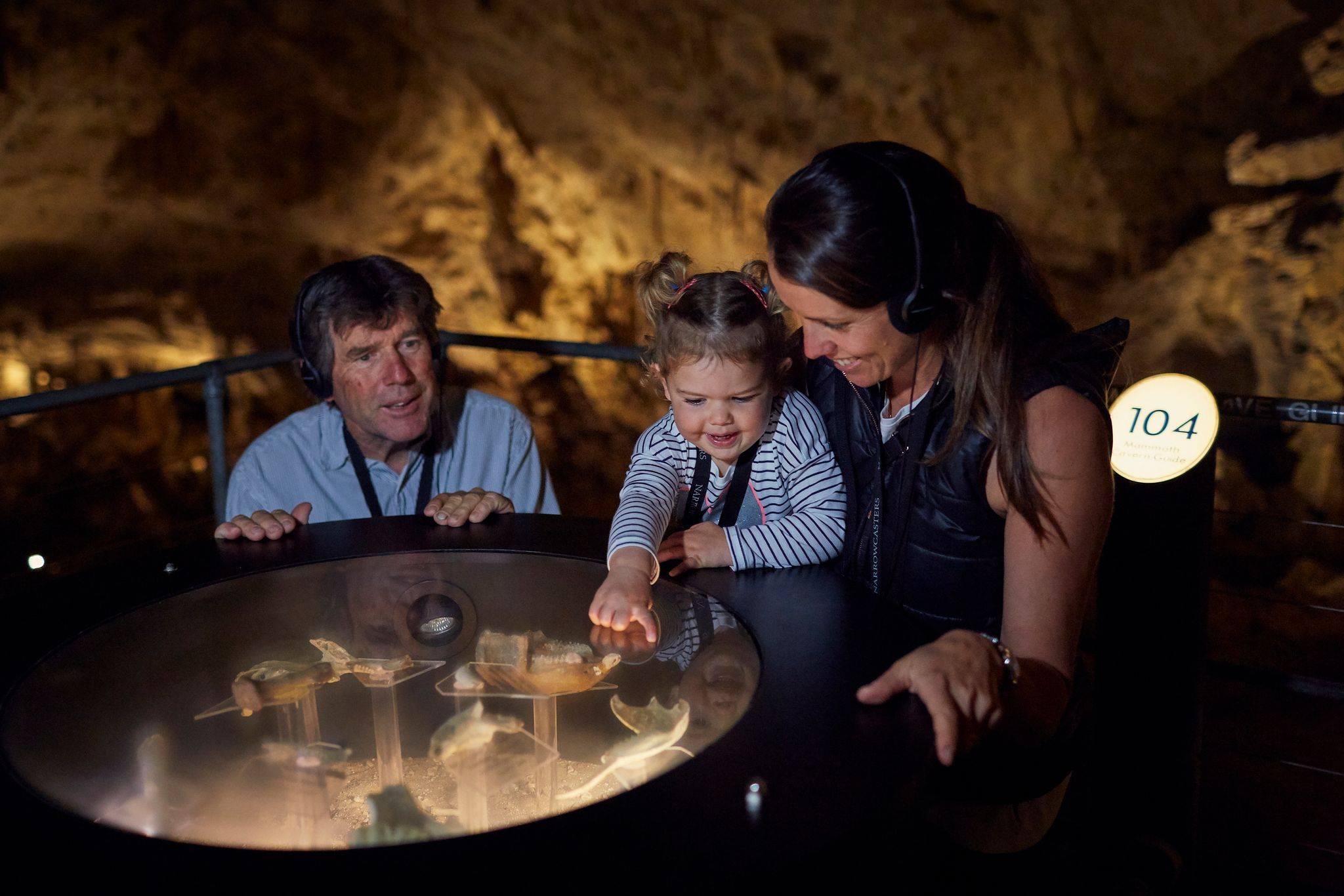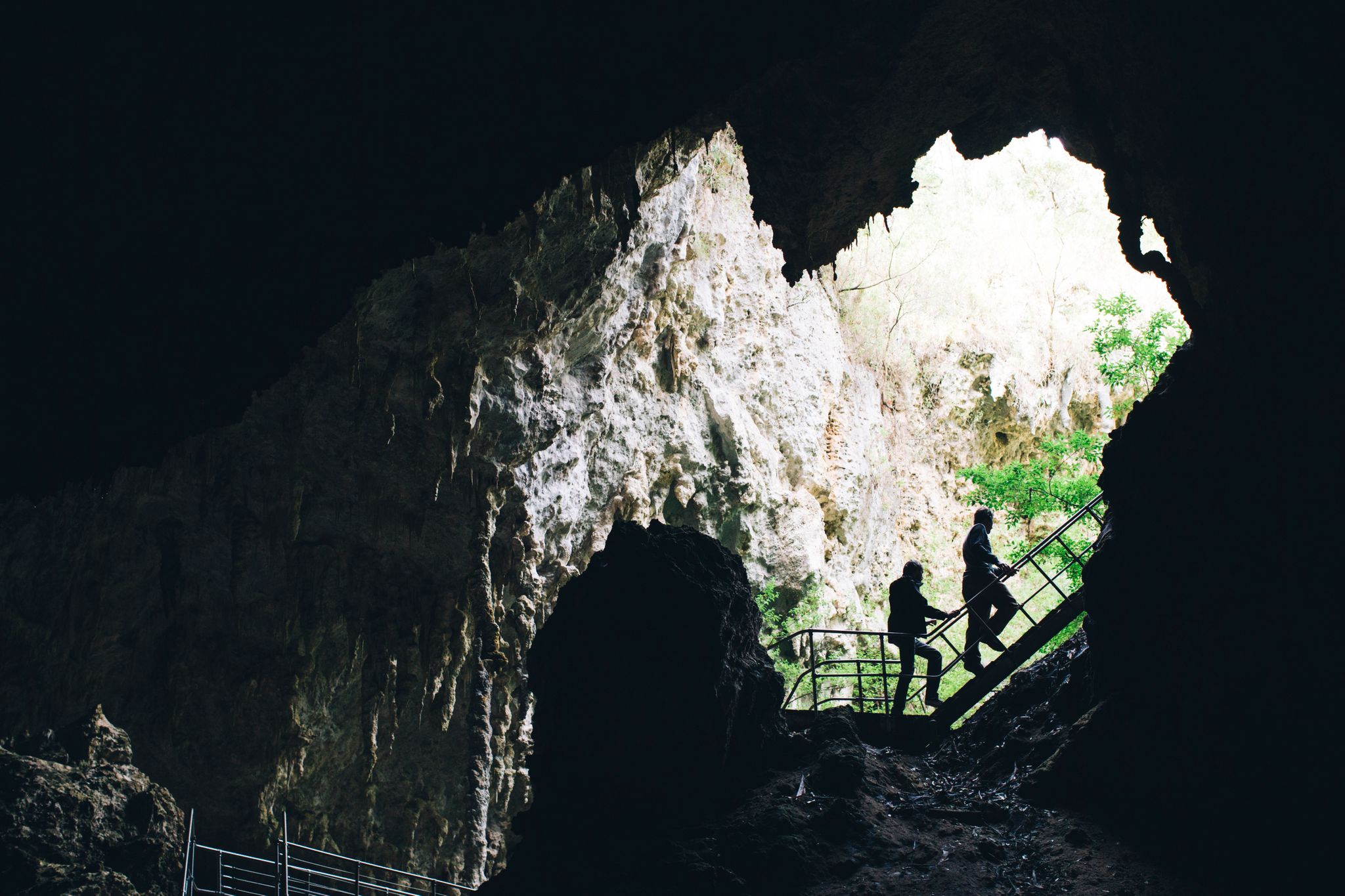One natural feature that not everyone gets to see is the stream that flows through the cave in the winter and spring months.
“It’s beautiful when it’s flowing,” says Andrew Green, Site Manager of Mammoth and Lake Caves. “And once it’s going, it’s going until late October, early November.”
When the autumn and winter rains fill up the swamps of the Nindup Plains, the water begins to spill over to start Mammoth Stream flowing again.
The stream winds its way down along the forest floor and under the bridge that leads into the cave.
The filling of the stream, which can happen anytime between June and August, can be slow enough to witness says Andrew.
“The first 150-200 mm of autumn rainfall soaks the catchment area, and the next 100-150 mm starts the stream on its way; creeping towards the cave at a metre every ten minutes or so,” says Andrew, who loves his forest-based job of 14 years.
